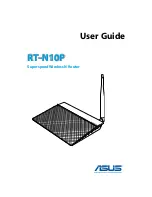
Software User Manual
D-Link Unified Access System
02/15/2011
Document 34CS3000-SWUM104-D10
Page 125
Table 29
describes the fields on the
All Access Points
page.
Table 29: Monitoring All Access Points
Field
Description
MAC Address
Shows the MAC address of the access point.
Location
A location description for the AP. This is the value configured in the valid AP database (either
locally or on the RADIUS server).
Switch Port
The physical port (in the slot/port format) on the switch that the AP is connected to either
directly or indirectly in the same L3 domain. If the AP is beyond the L3 network boundary, then
‘Unknown’ is displayed.
IP Address
The network address of the access point.
Software Version
Shows the version of D-Link Access Point software that the AP is running.
Age
Shows how much time has passed since the AP was last detected and the information was
last updated.
Status
Shows the access point status:
•
Managed—The AP profile configuration has been applied to the AP and it's operating in
managed mode.
•
No Database Entry—The MAC address of the AP does not appear in the local or RADIUS
Valid AP database.
•
Authentication (Failed AP)—The AP failed to be authenticated by the Unified Switch or
RADIUS server.
•
Failed—The Unified Switch lost contact with the AP; a failed entry will remain in the managed
AP database unless you remove it.
Note:
A managed AP will temporarily show a failed status during a reset.
•
Rogue—The AP has not attempted to contact the switch, and the MAC address of the AP is
not in the Valid AP database.
•
Acknowledged Rogue—The AP has been acknowledged as a known rogue, and its MAC
address of the AP is in the Valid AP database.
Profile
The AP profile configuration currently applied to the managed AP. The profile is assigned to
the AP in the valid AP database.
Note:
Once an AP is discovered and managed by the Unified Switch, if the profile is
changed in the valid AP database (either locally or on the RADIUS server) the AP is
automatically reset when a new profile is assigned.
Radio
Shows the wireless radio mode that each radio on the AP is using. The D-Link DWL-3500AP
access point has one radio, and the D-Link DWL-8500AP access point has two radios.
Channel
Shows the operating channel for the radio.
Authenticated Clients
Shows the number of wireless clients that are associated and authenticated with the access
point per radio.
Note:
Some status values for some APs in the All Access Points list are not available. Those are listed as N/A.
Note:
You can sort the list of APs by any of the column heading except for
Radio
,
Channel
, and
Authenticated
Clients
. For example, to sort the APs by the profile they use, click
Profile
.
















































